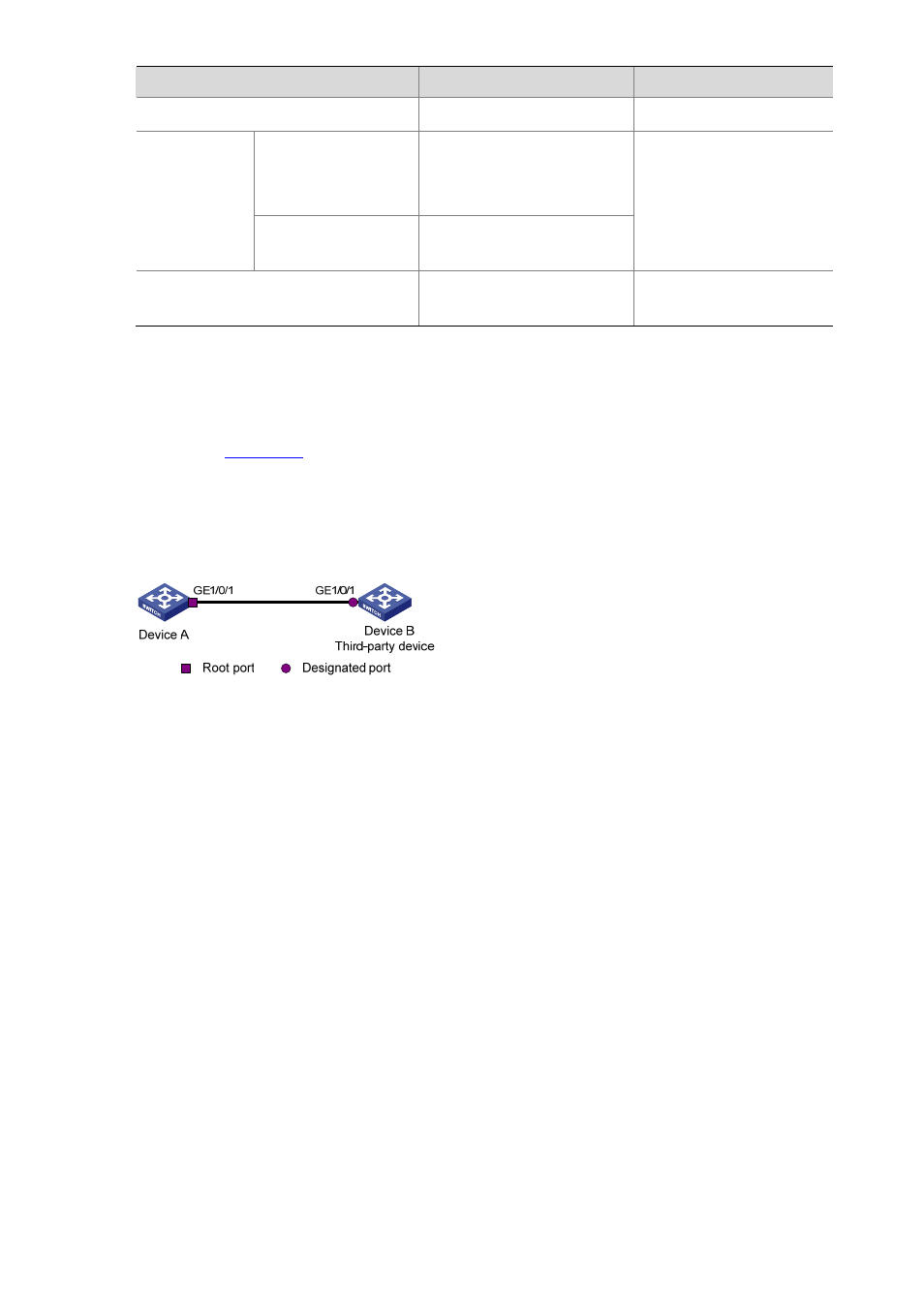No agreement check configuration example, Configuring protection functions, Configuration prerequisites – H3C Technologies H3C S5120 Series Switches User Manual
Page 200: Enabling bpdu guard

1-35
To do...
Use the command...
Remarks
Enter system view
system-view
—
Enter Layer 2
Ethernet port view, or
Layer 2 aggregate
port view
interface
interface-type
interface-number
Enter port
view or port
group view
Enter port group view
port-group manual
port-group-name
Required
Use either command.
Enable No Agreement Check
stp no-agreement-check
Required
Disabled by default
No Agreement Check configuration example
1) Network
requirements
As shown in
z
Device A connects to Device B, a third-party device that has different MSTP implementation. Both
devices are in the same region.
z
Device B is the regional root bridge, and Device A is the downstream device.
Figure 1-11
No Agreement Check configuration
2) Configuration
procedure
# Enable No Agreement Check on GigabitEthernet 1/0/1 of Device A.
[DeviceA] interface gigabitethernet 1/0/1
[DeviceA-GigabitEthernet1/0/1] stp no-agreement-check
Configuring Protection Functions
An MSTP-enabled device supports the following protection functions:
z
BPDU guard
z
Root guard
z
Loop guard
z
TC-BPDU guard
Configuration prerequisites
MSTP has been correctly configured on the device.
Enabling BPDU guard
For access layer devices, the access ports generally connect directly with user terminals (such as PCs)
or file servers. In this case, the access ports are configured as edge ports to allow rapid transition. When
